Out of fashion is out of business: styles that were in yesterday can be outdated tomorrow. That's the basic creed according to Hong Kong's TAL Apparel, a global supply chain leader and manufacturer in cotton shirts which is in the vanguard of the new "fast fashion" approach to supply management in the clothing industry.
"Fast fashion" is a term used to describe clothing collections which are based on the most recent fashion trends on the catwalk but which are designed and manufactured quickly, are affordable, and are aimed at mainstream consumers.
By maintaining efficiency and flexibility throughout its supply chain and responding quickly to changes in fashion trends, a company can make acceptable margins today from "fast fashion". The alternative is to go out of business tomorrow.
TAL Apparel entered the field of branded clothing in the 1980s - but soon left it amid the crowded marketplace and returned to OEM and ODM manufacturing, believing its expertise relied on design, pricing and logistics gathered into a customer-centric approach to product delivery.
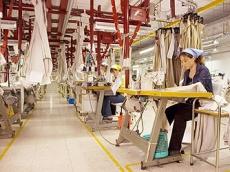 The TAL way.
The TAL way.
"The ability to go from concept to consumer in a very short period of time, initially it was the concept of going from concept to consumer in six weeks or less, but most recently I [believe] the same company can now go from concept to consumer in 15 days. That is 'fast fashion'," says Robert McKee, industry strategy director with fashion business management solutions provider, Lawson Software.
Most fashion and apparel organisations used to deliver two collections a year, spring/summer and autumn/winter. Today, most companies are delivering four, eight or 12 collections per year with industry leaders pushing out up to 24 collections and seasons for a collection compressed into few short weeks, explains McKee.
He adds: "what it requires is literally everyone in the entire value chain working together in a collaborative way to assure that there is never a delay in the creation of products. It also requires that you don't become too sophisticated in the development of new products and you work with a lot of common fabric and common yarn and common fibres. You can't get heavily involved in the fabric and textile development. You have to be dealing with a common degree of pooling that has a high degree of availability."
 McKee: in fast fashion, all must work together.
McKee: in fast fashion, all must work together.
The "fast fashion" system depends on a constant exchange of information throughout every part of the supply chain, from customers to store managers, from store managers to market specialists and designers, from designers to production staff, from buyers to subcontractors, from warehouse managers to distributors, says McKee.
"There is a huge saving in the 'fast fashion' concept. The saving is the significant reduction in time - and time is money. Being able to go in six weeks from concept to the consumer represents a significant amount of savings. More than savings, it is the ability to bring a variety of products to the market faster, giving the consumer a reason to shop. The old items are seldom replaced with the same item, it is generally replaced with new items and this makes the consumer want the new item, thus creating a new demand."
TAL model brings new concept to market
Hong Kong firm TAL brings a number of IT-inspired ideas to the new supply chain. For example, there's a replenishment model for goods that provides operational data, market trends, seasonal variations, as well as an alert mechanism that goes to TAL and its customers when deviations of the replenishment model occur.
 TAL shirts always replenishable.
TAL shirts always replenishable.
TAL also applies a vendor management inventory according to customer demand and "X Docking" which assumes all products are packed to store and are bar coded with scanning, for routing to dispatch trucks and immediate shipment to stores.
The TAL vendor management inventory system targets customer demand to warehouses and stores, while it claims to save up to 15% by reduced inventories and operational costs.
With its continual replenishment scheme, customers' shelves are stocked according to demand and forecasting, with delivery as required, TAL says.
The firm is proud of its supply chain customer brands, which include M&S, Goldlion and Giordano.
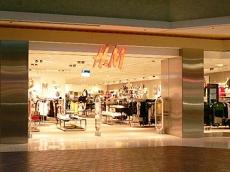 Fast fashion customer, H&M.
Fast fashion customer, H&M.
 Zara squeezes costs from the supply chain.
Zara squeezes costs from the supply chain.
The best examples of fast fashion customers today are retail stores such as Sweden's H&M and Spain's Zara.
Zara's fast pace means that some popular items appear and disappear within a week, creating an image of scarcity that many shoppers find irresistible. The brand builds an excitement about the new collection before it arrives. It also keeps margin-stripping markdowns to a minimum.
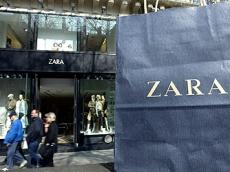 Zara's profits up.
Zara's profits up.
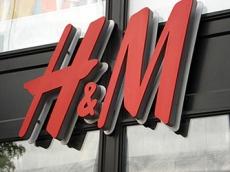 H&M's astonishing sales.
H&M's astonishing sales.
That helps explain Zara's global net profit soaring 25% last year, to US$1.9 billion, while H&M net profits increased 26% to US$2.3 billion, according to market research.
According to marketing company TNS, sales of adult "fast fashion" clothing has grown an astonishing 11% in an otherwise subdued retail market.
According to the latest industry figures from Fashion Trak, a division of market information specialist TNS, total clothing sales were up only 2% in the latest season.
But double-digit growth for fast fashion has been sustained across both menswear and women's wear over the past two years, far out-performing the clothing and footwear market as a whole.
The fast fashion market is primarily driven by the under 25's, who account for a third of all expenditure in this sector, with 90% of their sales going to the high street. Interestingly, fast fashion is increasingly appealing to a more mature market as the discounters and supermarkets broaden the availability of low-cost, high fashion to outlets visited by this age group.
Hong Kong the centre of the "fast fashion" concept
According to McKee: "a drive for the 'fast fashion' concept is based on the consumer; it is not a place or an entity. The consumer is the reason for the concept."
"Hong Kong is the element for the concept; Hong Kong is the component of several different aspects of the concept. Hong Kong being the choice of many major apparel and trading companies to house their [regional] headquarters makes the city the centre of commerce for the industry in this region," says McKee.
Fast fashion - or getting merchandise from one part of the world to another as quickly as possible - means smarter supply chain and logistics management.
TAL Apparel, being a customer of Lawson Software, uses a leading-edge manufacturing and information management technology to adapt quickly to the fast-changing fashion environment. Today TAL boasts an annual turnover of more than US$650 million and produces more than 55 million garments a year.
TAL implemented Intentia Fashion, an integrated fashion enterprise application. This has helped TAL to create a synchronised global supply chain and increase customer responsiveness, the company claims, while reducing inventory levels by as much as 30%.
"With Intentia Fashion, we can provide new services to customers and internal business units that were not possible before. We now have better supply chain visibility, we can see demand and supply information all in one single view," claims Delman Lee, director of technology for TAL.
"We are able to respond better to customer requests, and ensure on time delivery. As such we are seen as a leader in our management of the supply chain in our industry," explains Lee.
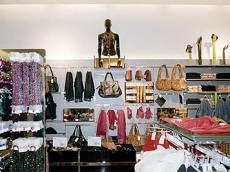 Intensified pressure on market timing.
Intensified pressure on market timing.
Consumer demand and the emergence of fast fashion are intensifying the pressure to cut time-to-market. Experts suggest that total lead times need to be cut by 50% or more over the next two-to-five years. Much of this reduction will come from product design and development processing.
"Fast fashion has made most organisations think how they can work differently than in the past. More than 'fast fashion' it's called 'relation and communication'. The issue is technology. The major component of fast fashion is technology and willing to share information as rapidly as possible, that ability is critical," McKee says.
Fast fashion has captured the market and is here to stay. The right mindset and technology will make it work for any organisation aiming to be the next H&M or Zara.
from special correspondent Resham Aron, Hong Kong
Contact: Company/Contact Person Tel/Fax/Email/Web Lawson SoftwareRobert McKee, Industry Strategy Director of Fashion USA Tel: (1) 847-413-2844
Fax: (1) 847-910-2516
Email: Robert.mckee@us.lawson.com
Web: http://www.lawson.com TAL Apparel Limited
Tel: (852) 2738-6211
Fax: (852) 2738-6228
Email: hongkong@talgroup.com
Web: http://www.talgroup.com





